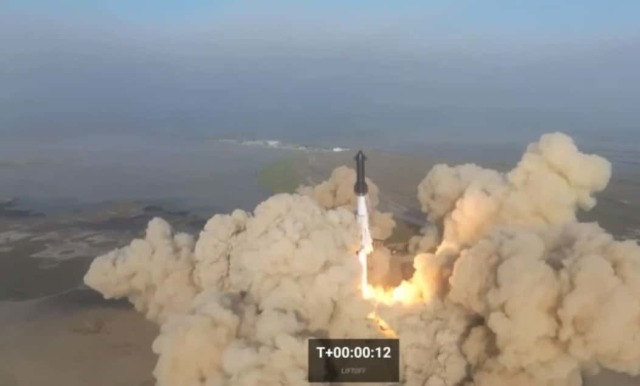On April 20, at 16:28 Moscow time, the American company SpaceX launched a prototype of the reusable Starship transport system from the Boca Chica site in the southeast of Texas in the United States. Four minutes after launch, the prototype of the Starship system exploded, gaining an altitude of 38 kilometers.
An emergency situation arose in the third minute of the integration flight tests, when the prototype of the spacecraft of the same name (sample Ship 24) could not separate from the prototype of the super heavy carrier Super Heavy.
SpaceX CompanyEarlier, the launch of a prototype reusable transport system, scheduled for April 18, was postponed due to abnormal pressure in the carrier's fuel tank.
The launch itself became possible after SpaceX received the appropriate permission from the US Federal Aviation Administration.
SpaceX did not plan to restore the Starship prototype
The first flight test involved the flight of the prototype Starship on a suborbital trajectory, but the transport system would have developed a speed corresponding to the orbital motion (the first space).
After detaching from the carrier, the Ship 24, according to SpaceX plans, was supposed to reach an altitude of 235 kilometers, after which it began to descend, eventually landing in the Pacific Ocean near Hawaii.
The Super Heavy carrier was supposed to make a landing in the Gulf of Mexico near Boca Chica.
The next Starship tests will take place in a few months
Initially, the head of the company, Elon Musk, was skeptical that the first integration flight tests would go according to plan.
The American engineer and businessman stated that the relevant tests will be considered successful if the Starship manages to take off without damaging the launch pad.
Bill Nelsonhead of NASA
It may take several months to assemble the second prototype of Starship and prepare it for flight.
Starship will become the most powerful rocket and spacecraft in the history of mankind
The bundle of Super Heavy and Starship will become the largest, most powerful and lifting rocket system ever created by mankind, bypassing such superheavy carriers as Saturn V, Energia and Falcon Heavy.
In particular, in reusable mode, Starship is expected to be able to launch up to 150 tons of payload into low Earth orbit, and in one—time mode - up to 250.
The main purpose of Starship is to send a man to Mars
The Human Landing System (HLS) lunar lander, which SpaceX is creating for NASA, will be based on a modified version of the Starship spacecraft.
In addition to the American lunar program, Musk plans to use the promising reusable system to launch Starlink satellites
As part of the Rocket Cargo program, the US military will be able to use a reusable transport system for high-speed cargo delivery throughout the Earth.
The idea of using Starship for intercontinental flights on Earth is considered in SpaceX and in the context of human delivery.

